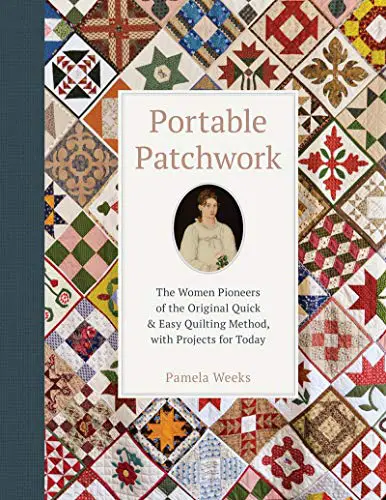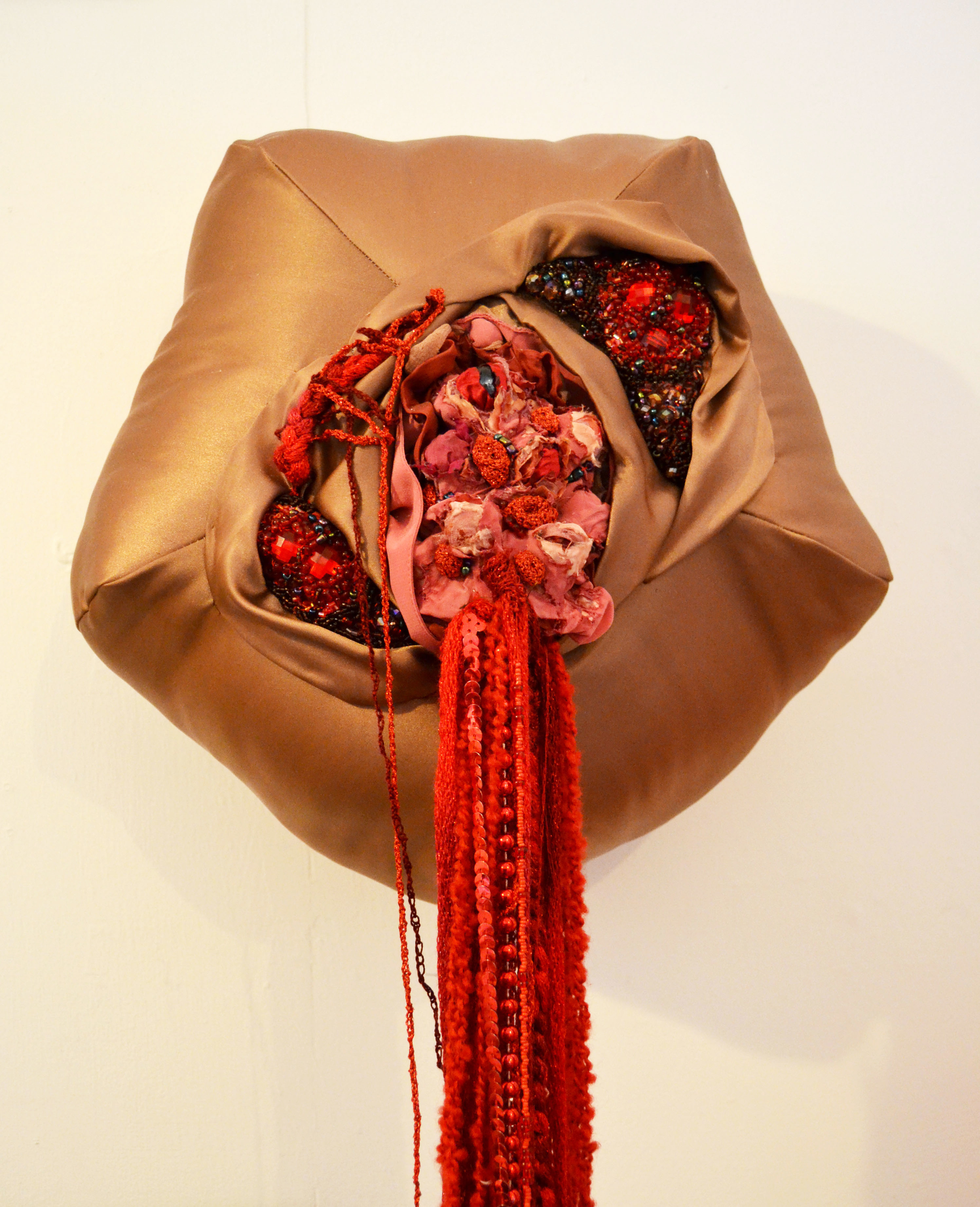
At Mr X Stitch we love to review textile art and embroidery books for you. There are so many great books to discover, packed with needlework inspiration and textile techniques, so we dive into each book to find out what’s good, what’s bad and let you know why you should pick it up.

Introduction
Portable Patchwork: The Women Pioneers of the Original Quick & Easy Quilting Method by Pamela Weeks is a book that explores the history of “quilting as you go” techniques and provides the reader with a modern connection to this perennially popular pastime.
The author takes the reader on a trip from 1837 to the present day, breaking down the trip into various time frames that illustrate the techniques and trends of the time. It is intriguing and inspiring.
About the Author
Pamela Weeks has an incredible rich and involved history when it comes to quilts in many forms. She is curator of the New England Quilt Museum as well as a historian and a quilter in her own right. She co-wrote Civil War Quilts with Don Beld, and Deeds Not Words: Celebrating 100 Years of Women’s Suffrage with Sandra Sider.
Who Is This Book Aimed At?
This is a book on portable patchwork quilting through history; this makes it a book clearly aimed at people interested in the history of quilts. However, it is also a book that is aimed at anyone interested in portable quilting.
If you are like me, you may not have envisioned that women 200 years ago engaged in portable quilting. I have always just assumed they quilted an entire quilt top, such as in quilting bees and circles! I have always loved the notion of portable quilting as it takes up so much less space when being worked on and seeing that women of old had their methods really intrigued me and educated me.
The author aims at quilters interested in different methods of portable quilting while also showing the history of portable quilting, such as seen in potholder quilts. I had never heard of potholder quilts and may well have to try one!
There is also a section at the end that offers up a few pattern templates which clearly is aimed at the individual who just wants to make a quilt. With so many examples of quilts through history this book is clearly for anyone interested in quilting and making quilts; history aside.

Content
Weeks begins with A Field Guide to Quilt as You Go which breaks down portable quilting, giving the reader a better understanding of what it can, and does, entail. This section also includes pictures and descriptions of different ways quilters can, and have, closed the backs of quilt blocks that have been been quilted on the go. I adore this descriptive section.
The next chapter is titled The Search for the Origin of Potholder Quilts. I had never heard of potholder quilts and as such this enlightened me. Whenever I have done a quilt as you go project I folded under edges in the back and hand stitched together. With potholder quilts each block already has its own binding. I am rather inspired by this approach!

The next six chapters take the reader through specific times in history as they relate to the portable quilt.
She presents:
- The Earliest Potholder Quilts: 1837-1850
- Friendship and Presentation Quilts: 1851-1860
- The American Civil War: 1861-1865
- A Multitude of Fabrics:1866-1900
- Fundraising and Folded Quilts: 1901-1969
- Quick and Easy Quilting: 1970 into the Twenty-First Century.
- The final chapter offers the reader Quilt as You Go Projects.
Each one of these sections stands on its own as informative and inspiring. Personally I have always been intrigued by American Civil War quilts so that section was one of my favourite. With each section comes a new view of the various stages of quilting history as it connects to portable quilting techniques and approaches.

Photography
This book has incredibly detailed photography that presents the reader with images of entire quilts and close up photos that allow the reader to see methods of stitching as well as a better understanding of fabrics designs and colours. Below are just a few!



What Makes This Book Special
There are, perhaps, a lot of books that deal with the history of quilting but this one truly connects modern techniques with historical approaches to quilting. It illustrates that although there are decades/centuries that separate quilters, there is actually more that connects us than not. For me, it feels as though this connection becomes even more clear when reading about women who employed portable quilting in the past.
I also really appreciate how the sections are broken down in history, illustrating different types of quilts and techniques. It is concise and intriguing. Also, as mentioned, the photographs are perfect in offering quilts and details.

Anything Wrong With This Book?
The only thing that may be wrong with this book is that which involves projects. I would have loved more detailed projects with all the different approaches discussed within the book. But, then again, I love more and more projects based on historical quilts. Aside from that I find nothing wrong with this book.

Conclusion
More often than not, while I love the history of quilting, I have a hard time reading books about the history of quilting. This book has so many little details of quilts and so many pieces intriguing information that I find myself a big fan of reading the history! Weeks provides many layers of information which enables the reader to become more aware of the historical significance of motifs and quilting practices of the times. I feel that is very valuable in my own quilting journey. Overall, and in closing, this book provides a wealth of inspiration, complete with techniques and images, for the modern quilter. Anyone interested in quilts and quilting will find something of profound value in Portable Patchwork by Pamela Weeks.
If you would like to purchase a copy, simply click this link!





